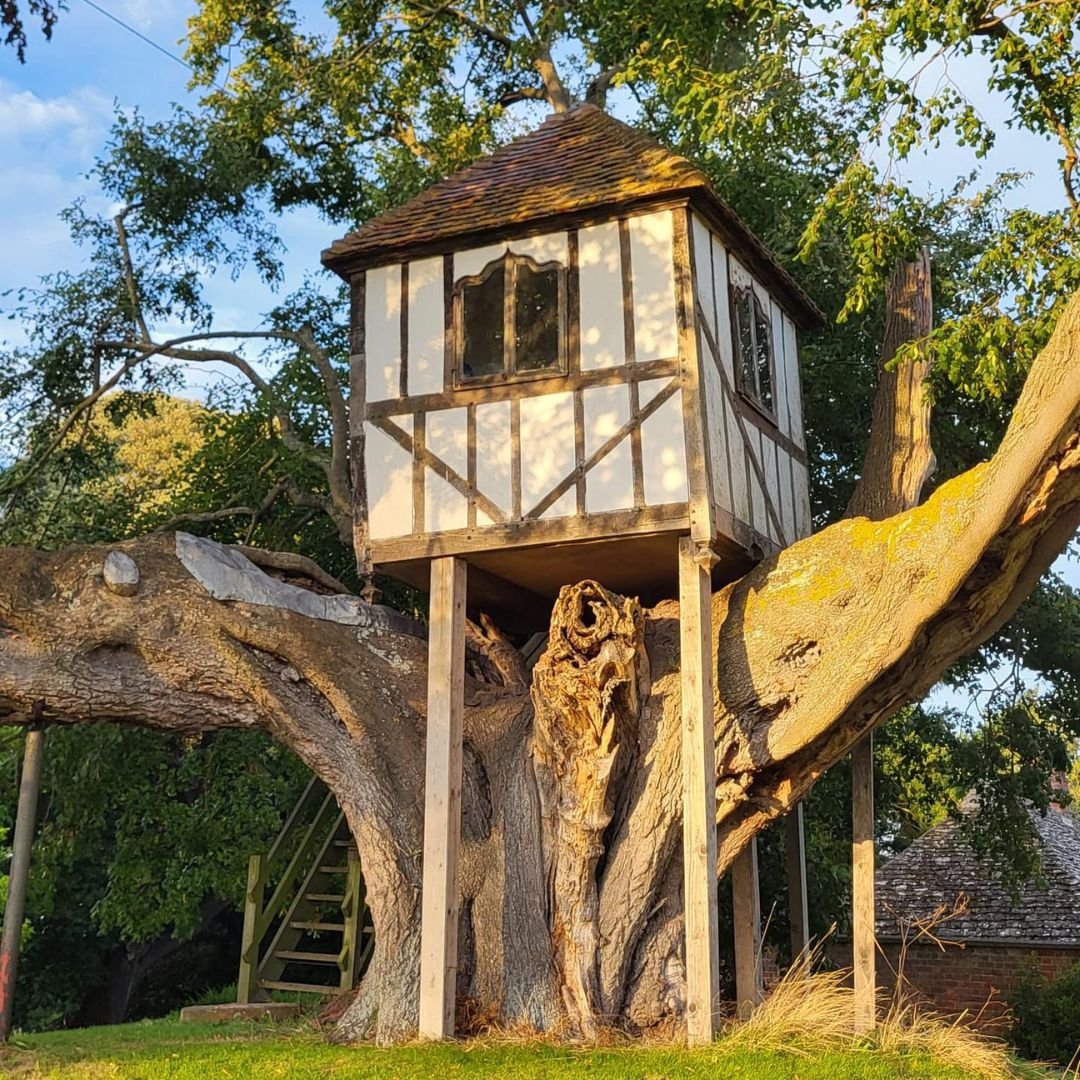Pitchford Hall: One Of England's Finest Elizabethan Houses
Pitchford Hall, Shrewsbury is a stunning Grade I listed building and one of England's finest Elizabethan half timbered houses.
Pitchford Hall has a long and largely peaceful history, having passed between many owners in its time and seen many alterations and renovations.
Royalty have been infrequent guests, sometimes on pleasant vacations and sometimes on more urgent business.
There has been a manor house on the estate since at least 1086, although it's likely that older estates were present on the site well before that.
A section of the Watling Street runs through the estate, an ancient trackway that runs from the Kentish ports through Canterbury, London, St Albans and all the way to Wroxeter on the Welsh border.
The Romans paved the route and used it to connect Dubris (Dover) Rutupaie (Richborough) Lemanis (Lympne) and Regulbium (Reculver) to their bridge over the Thames at Londinium.
In 1284, the house was recorded as being in the possession of the De Pykeford family, with the Crusader Geoffrey De Pykford recorded as Lord of the Manor in 1272.
He built the Church of St Michael which stands near the manor today, and contains an oak statue of him. The De Pykfords had to sell the estate to the church in 1330 to pay debts.
In 1473, one Thomas Ottley bought the Manor of Pitchford, with his descendent Adam Ottley, a wool merchant, building the building that stands today, possibly as an extension of a much larger manor.
The Estate contained a deer park from 1638 to 1790.
Depictions of the house from 1778 show the distinctive timber-framed construction but a radically different layout, with a small river bridge and a less extensive layout.
In 1807, the estate passed from the Otley family to the Hon. Charles C.C. Jenkinson, second son of the first Earl of Liverpool.
In 1832 Queen Victoria, then a Princess, visited the hall by invitation from the owner, the 3rd Earl of Liverpool.
Her Majesty described the hall as 'A curious looking but very comfortable house.’
The Princess watched the local hunt from the hall's treehouse.
The Hon. Jenkinson had the building extended and extensively rebuilt in the 1870s and 1880s by the architect George Devey, installing replacement windows, baths and water closets and extending the building extensively.
His son-in-law John Cotes inherited the hall, passing it on to his son Charles Cotes, who then died unmarried in 1918 whereupon the hall passed to his brother-in-law Lieutenant-General Sir Robert Grant.
A Royal Refuge
Some time after the Dissolution of the Monasteries (during the reign of Henry VIII) and when Roman Catholics were being persecuted for their religious beliefs, a Priest's Hole was installed in the house.
It is believed to have been used at various points in the house's history.
During the Second World War, the Hall was one of the pre-prepared bolt holes to be used by the Royal Family in the event of a Nazi invasion of London.
A special unit of the Household Cavalry, the Coats Mission, was assigned to aid their dramatic escape from the capital.
The Treehouse
The famous Tree House at Pitchford, arguably the oldest in the world, is circa 17th Century origin - first mentioned in 1692.
It was given a new image in 1760 and was renovated again in 1980. Situated in a large leaved lime tree (Tilia Platyphyllos) it is constructed in the same style as Pitchford Hall.
A part glazed door opens into the tree house to reveal a carved moulded cornice ceiling, stripped oak floor and gothic windows on all sides.
There is evidence that the restoration in 1760 may have been the work of the Shropshire architect Thomas Farnolls Pritchard.
Queen Victoria recorded in her diary that she watched a visiting pack of foxhounds from the treehouse during her visit to Pitchford Hall as a young princess.
When it was first built in the 1600s the treehouse was supported entirely by the tree.
Now, because of its great age the tree is held up by metal supports and wires, ensuring that the treehouse will remain standing for decades to come.
If you wish to visit Pitchford Treehouse or the estate as a whole, book a tour Pitchford Hall through Invitation to View.
Tours cost £20 and include a complete tour of the hall, the grounds and the treehouse led by a knowledgeable tour guide.
One recent visitor said: “We visited Pitchford Hall for a guided tour booked through Historic Houses. Our guide was a local volunteer - John.
”He really knows his stuff and how to keep everyone interested. Our tour lasted about two hours and took us from pre Roman through Roman, medieval, Georgian, Victorian right up to present.
”All finished off with a lovely cup of tea and home made cake. If you like history, architecture, or just beautiful sites this is one not to be missed. Many thanks.”
If you’d like to visit, the address is: Shrewsbury SY5 7DP.
If you enjoyed this blog post, please follow Exploring GB on Facebook for daily travel content and inspiration.
Don’t forget to check out our latest blog posts below!
Thank you fort visiting Exploring GB.




















